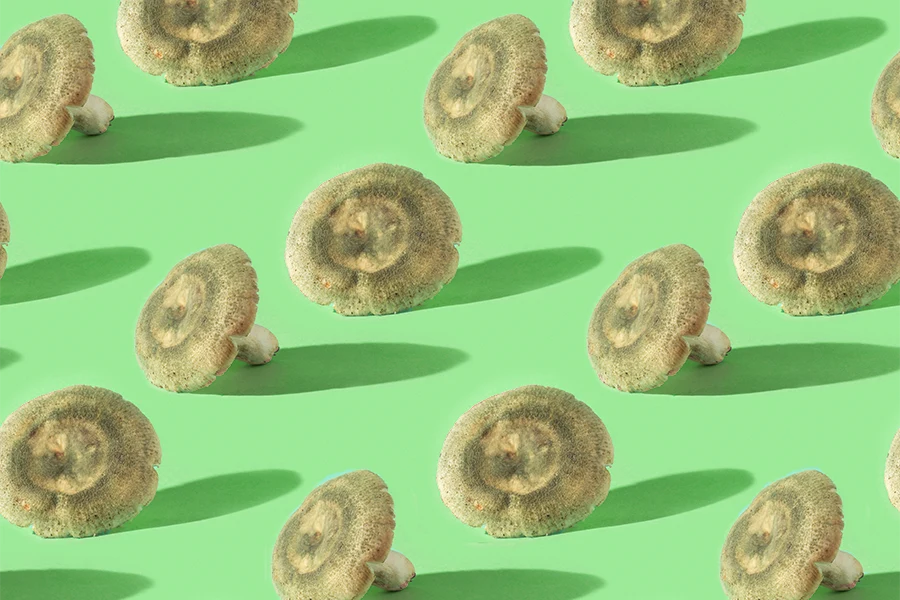Somewhere between plants and animals lies a group of organisms among the most captivating life forms on Earth: Mushrooms. Beyond their exceptional benefits for health and well-being, these enigmatic organisms can emerge seemingly overnight; some emit an eerie glow in total darkness—and others can even be used as a sustainable fuel source! (Okay, we admit we made that last fact up, but we had to start with something ridiculous so you’d believe the following—unbelievably weird—facts about mushrooms.)
Seven Weirdest Facts About Mushrooms
From mycelium that can upload data faster than any computer to mushrooms that inspired some of our oldest traditions, prepare to have your mind blown with these creepy mushroom facts—or, at the very least, you’ll have some fun factoids to make you sound smarter during conversations.
1. Mushrooms Are Communication Wizards
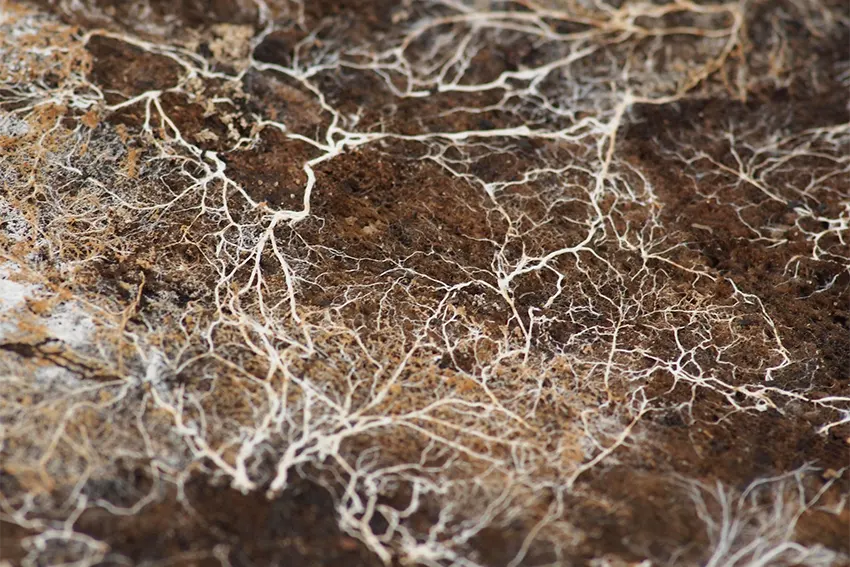
Imagine the life of a mushroom. Between surviving mother nature’s torments to depositing spores for reproduction, it’s a pretty solitary existence—or so we thought. Believe it or not, mushrooms are masters of networking, and we’re not talking about social media. These fungal wizards have a knack for creating intricate information highways beneath the forest floor, connecting trees and plants in a way that would make even the savviest tech mogul envious.
These networks, known as common mycorrhizal networks (CMNs), consist of arbuscular mycorrhizal fungi—a lengthy science term for a particular type of fungus that crashes the party without being invited, never leaves, and doesn’t help with rent.
But what this fungus lacks in manners makes up for with its communication skills. Picture a tree in need of nutrients—it can send out a signal through the mycorrhizal network, essentially posting a help-wanted ad. Nearby plants with a surplus of nutrients can respond to the call, sharing their abundance with the needy tree.
These fungal networks aren’t just for resource sharing; they’re also the hubs of information exchange. Trees can communicate with each other through the mycorrhizal network, sending chemical signals that warn of impending dangers, like hungry insects or lurking diseases. In turn, the mycelium takes a small cut for itself, and everyone goes home happy.
How to Grow Shrooms Bundle
Take Both of Our Courses and Save $90!
So, next time you’re marveling at a serene forest scene, remember that beneath the soil lies a bustling network of fungal communication, a natural internet that’s existed long before influencers, telemarketers, and almost everything else you see around you.
2. Mushrooms Glow In The Dark
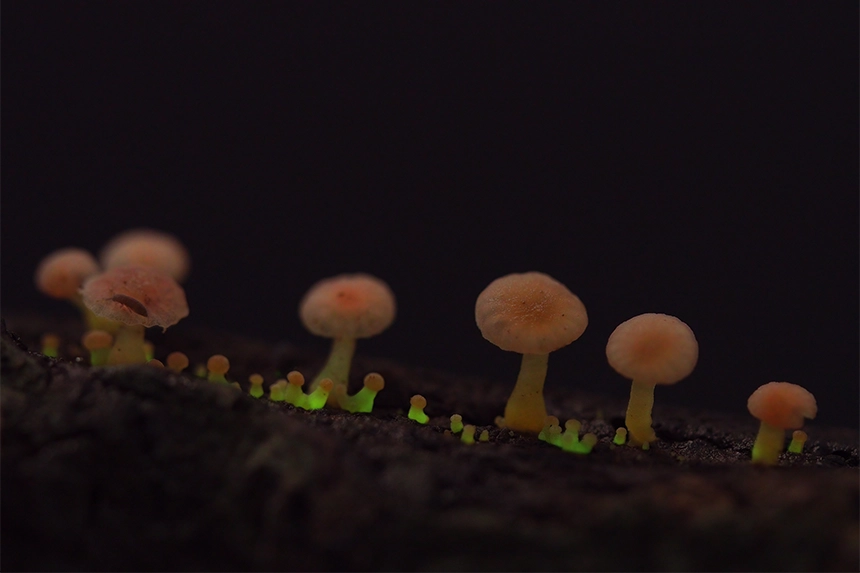
Some shrooms take their captivating traits to a new level by glowing in the dark. This extraordinary phenomenon—bioluminescence—turns certain fungi into natural night lights.
Under the cover of darkness, these luminescent mushrooms emit a soft, eerie glow ranging from blue to green. The exact purpose of this bioluminescence isn’t entirely clear, but it may play a role in attracting insects or aiding in spore dispersal. It’s like a subtle, otherworldly spectacle lighting up the forest floor, adding another mystique to the fascinating world of mushrooms. Plus, we’re afraid of the dark, so every bit of light helps.
3. Mushrooms and Humans Are Related?!

Although mushrooms sprout from the ground and share some characteristics with plants, researchers say they have more in common with our human DNA than your average ficus. Humans and mushrooms produce vitamin D when exposed to light, unlike plants that depend on sunlight for photosynthesis. Plants use starch to store energy, while humans and fungi store carbohydrate energy as glycogen. While humans and mushrooms share the broader classification of eukaryotes (organisms with complex cells containing a nucleus), our evolutionary lineages diverged a very long time ago. The only mushrooms that will be at your next family reunion will most likely be on the menu.
4. Mushrooms Give You Superpowers—Well, Sort Of
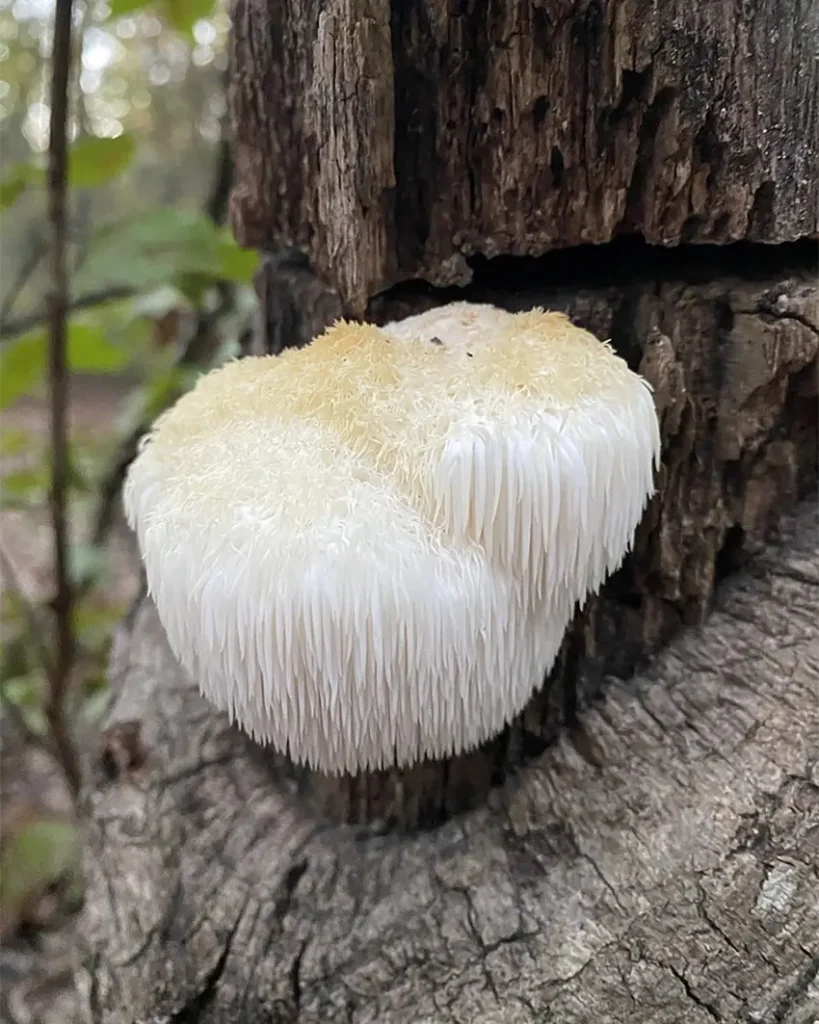
Well, no—you won’t be able to breathe underwater. Or fly. Or read minds. Still, the Lion’s Mane mushroom boasts a remarkable trait: It’s a natural nootropic. In other words, it has the innate potential to enhance cognitive function, improve memory, and perhaps even elevate mood. For a deeper dive into the wonders of Lion’s Mane, be sure to explore our article dedicated to this incredible fungus.
Curious about nootropics? We explore in our article on the brain-boosting power of mushrooms. Here’s an excerpt:
“Coined in 1972 by Romanian psychologist and chemist Corneliu Giurgea, the word “nootropic” originally described drugs that could positively impact learning and memory. Today, the word is frequently used to advertise brain-boosting supplements and other products—with controversy.”
5. Mushrooms Can Be Time Travelers
Okay, not in the way you might be thinking—but mushrooms do have a remarkable ability to provide us with insights into the past. Think of them as the historians of the natural world, silently recording environmental changes over the centuries.
Mushrooms are sensitive living organisms, and just like us humans, they’re not afraid to show it. Some species have the incredible power to absorb elements from their surroundings, including heavy metals and other pollutants. As they grow, they slowly accumulate these elements within their tissues–like rings on a tree, essentially creating a living archive of the environment they’ve been exposed to.
When scientists study the composition of these mushrooms, it’s like flipping through the pages of an ancient history book. By analyzing the levels of different elements, researchers can deduce the quality of the air, soil, and water in the past—it’s like a cute little edible time machine.
6. Shrooms Are HUGE
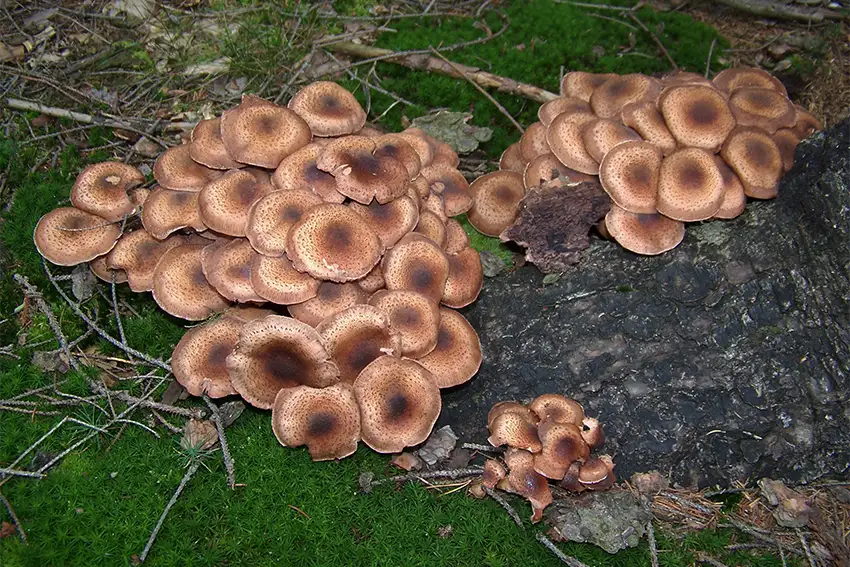
Move aside, blue whale—the title of the largest living entity on Earth goes to mushrooms. A particular honey fungus (Armillaria solidipes) stretches an astonishing 3.8 kilometers across the expanse of Oregon’s Blue Mountains.
A. solidipes are known to be parasitic and can infest live trees, causing root and stem rot. In the case of A. solidipes, its aggressive nature and ability to kill off trees has earned it a reputation as a tree pathogen, capable of causing significant damage to forest ecosystems.
7. Mushrooms Are Masters Of Decomposition
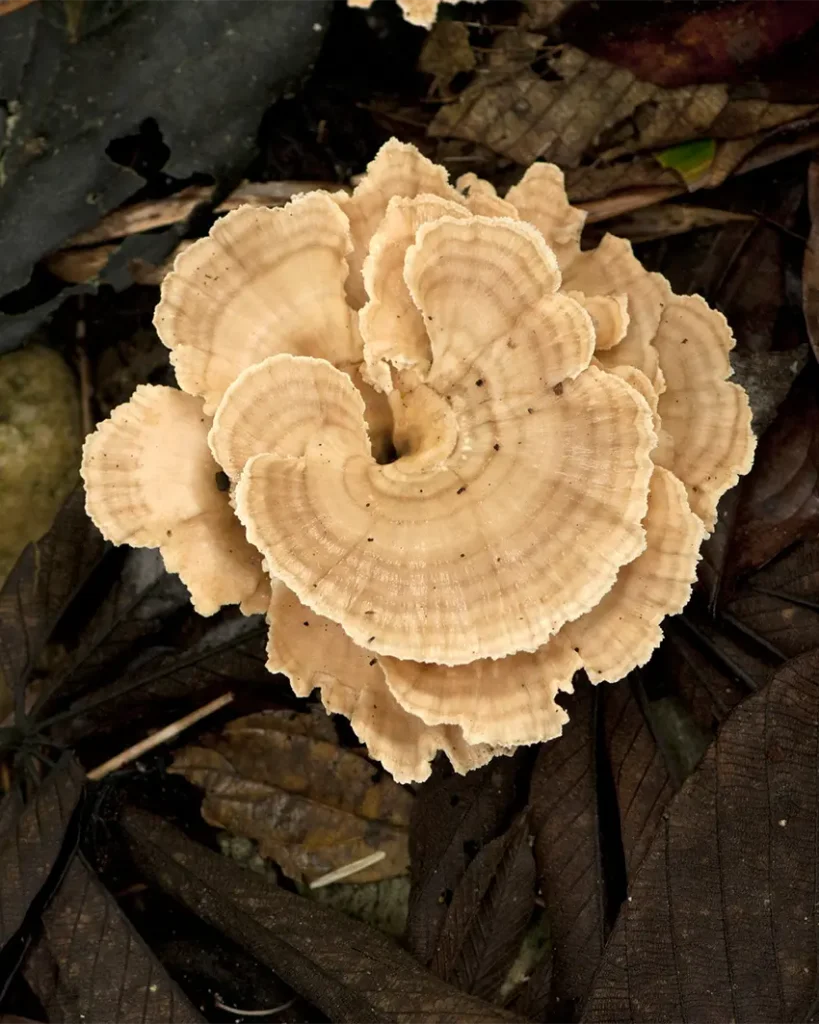
When it comes to recycling in the natural world, mushrooms make even the most earth-conscious person look like an ExxonMobil shareholder. These fungi are nature’s hardest-working cleaning crew, turning nature’s trash into fertile soil for future generations of plant life.
Imagine an old, fallen-down tree in the middle of the forest. Over time, it becomes a safe haven for all sorts of life, from insects to microorganisms. But it’s the mushrooms that truly shine in this ecological apartment complex. As they establish their mycelium, those thread-like structures that make up the “body” of the fungus, they set to work breaking down complex organic matter that would otherwise lay untouched.
Mushrooms have an arsenal of enzymes that can dismantle even the most stubborn compounds, like lignin—a key component of wood that most other organisms struggle to digest. As the mycelium weaves through the decomposing material, it transforms into a nutrient-rich substrate that can nourish new plant life!
Love These Facts About Mushrooms? Deepen your learning with more magical mushroom things.
Love a good shroom joke? Check out our ultimate list of the very must mushroom puns. Don’t have time? Don’t worry—amanita minute, too.
Interested in exploring the fantastical world of psilocybin mushrooms? Explore our magical mushroom encyclopedia. (Adults only, please.)
If these creepy mushroom facts weren’t quite strange enough, we can take things to the next level. Check out the weirdest mushrooms on the planet.

DoubleBlind is a trusted resource for news, evidence-based education, and reporting on psychedelics. We work with leading medical professionals, scientific researchers, journalists, mycologists, indigenous stewards, and cultural pioneers. Read about our editorial policy and fact-checking process here.

DoubleBlind Magazine does not encourage or condone any illegal activities, including but not limited to the use of illegal substances. We do not provide mental health, clinical, or medical services. We are not a substitute for medical, psychological, or psychiatric diagnosis, treatment, or advice. If you are in a crisis or if you or any other person may be in danger or experiencing a mental health emergency, immediately call 911 or your local emergency resources. If you are considering suicide, please call 988 to connect with the National Suicide Prevention Lifeline.
